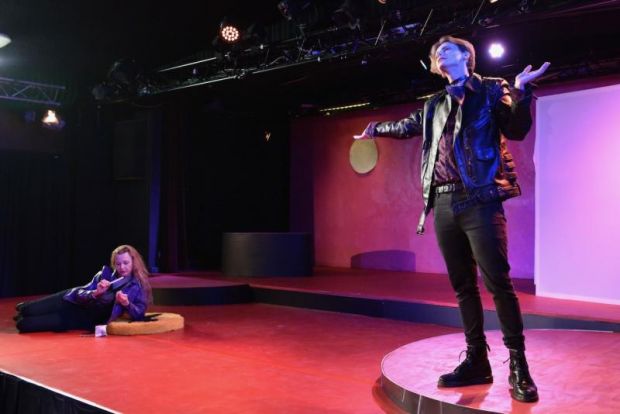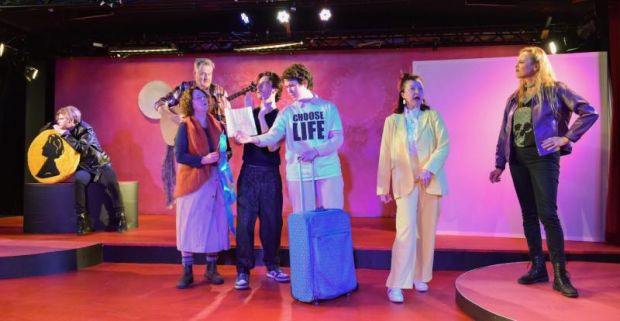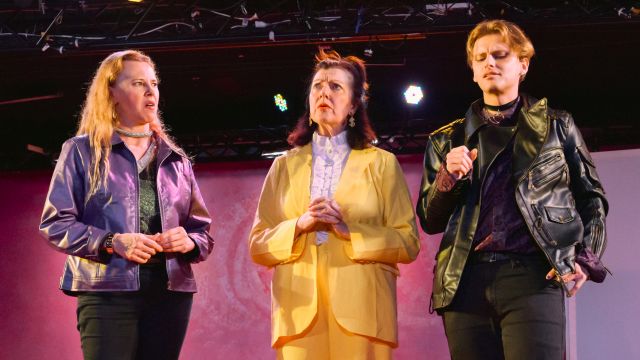Rosencrantz and Guildenstern are Dead
Sir Tom Stoppard is one of Britain’s most famous – and prolific – theatre writers. He has written for the stage (Arcadia), screen (Shakespeare in Love, The Enigma) TV and radio. According to Britannica, Stoppard “is one of the most internationally performed dramatists of his generation”. His plays are complex and complicated in both themes, characters and settings.
Rosencrantz and Guildenstern are Dead is set on a ship carrying the characters from Denmark to England. It was first performed in London in 1966. It is an absurdist, existentialist work based around the themes and characters of Shakespeare’s Hamlet, including excerpts from the play. Stoppard uses two minor characters Rosencrantz and Guildenstern, once student friends of Hamlet, to comment on the role of chance and indecision in life – and the inevitability of death.
The script is complex, beginning with a clever take on probability that suggests the apparent randomness of life. It leads Rosencrantz and Guildenstern into an extensional search for meaning of their existence punctuated with suggestions from Shakespeare. The play moves from slapstick to extensional terror in a script that requires careful reading and understanding and even more careful direction and performance.

The 2013 Sydney Theatre Company’s production of this play stays vividly in my memory. It starred Tim Minchin as Rosencrantz, Toby Schmitz as Guildenstern and Ewen Leslie as The Player. It was directed by Simon Phillips with an incredible set and amazing costumes designed by Gabriela Tylesova. That is the sort of cast and direction an intellectual play such as this demands. It moves seemingly haphazardly from slapstick to extensional terror. The dialogue is difficult and must at times be delivered quickly. There isn’t time for posing and flamboyant gesture and pausing.
For all those reasons, it's a play not often approached by community theatre companies. And it’s long – which means it needs to grab the audience quickly and sustain their interest. So, it was very brave for Hunters Hill Theatre to take it on – especially with a director who chose to take Stoppard’s words “my fears it would be over-respected” to heart.
Tui Clark set her interpretation of the play in front of two pink screens, on one of which shadow puppets are used to depict the scenes from Hamlet. There are no props apart from a striped beach umbrella that appears in the third act. The costumes are contemporary. The actors have only Stoppard’s words with which to work – and unfortunately, despite their enthusiasm, they fall short of depicting the complex implications behind those words.

They have obviously worked hard, especially Karen Pattinson who, as Rosencrantz, tries desperately to move the action along, despite a Guildenstern (Jivan Drungilas) who breaks the rhythm of Stoppard’s lines with erratic pauses and irrelevant posturing. Pauline Gardener depicts a hesitant Player, and her players conjure the artisans of A Midsummer Night’s Dream rather than the more seasoned troupe portrayed in Hamlet.
Hunters Hill has a long history of producing good community theatre – and of taking risks that many other community theatres don’t or can’t afford to take. Mounting this play may have been one of those risks – and it was heartening to see most of the small Friday night audience seeing the play out and supporting the cast. It is hard playing to a small audience, and I congratulate the cast on their buoyancy and resolve.
Carol Wimmer
Subscribe to our E-Newsletter, buy our latest print edition or find a Performing Arts book at Book Nook.

